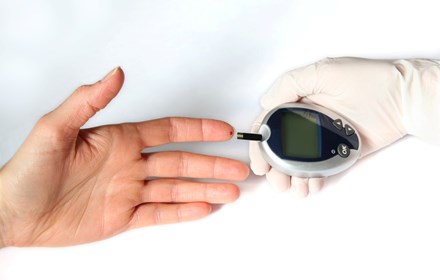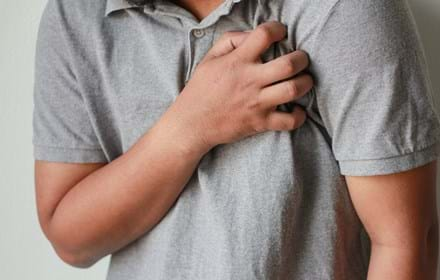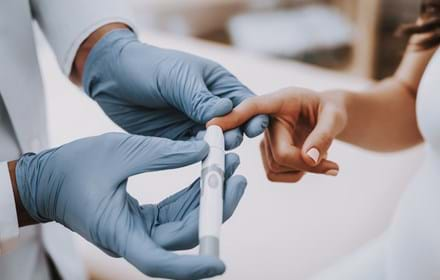
Twists and turns ahead for diabetes research - Blog report
DRWF Research Manager Dr Eleanor Kennedy reports from the European Pancreas and Islet Transplantation Association 10th EPITA Symposium & 39th AIDPIT Workshop in Igls, Innsbruck, Austria.
Nestled in the Tyrol region of Austria in the mountains above Innsbruck is Igls, the site of the 10th annual meeting of the European Pancreas and Islet Transplantation Association (EPITA) conference.
This three day extravaganza of the best of whole pancreas and islet cell transplantation research from across Europe and beyond led by some of the world’s key opinion leaders is kicking off with a symposium on Stem cell derived beta cells – The road to the clinic.

Viable stem cell therapy
The first session focusses on exactly how we are going to get viable stem cells – either from embryonic stem cells or from induced pluripotent stem cells – into everyday therapy. And this road to the clinic is not going to be without its twists and turns and steep uphill sections.
The most important question to address is what exactly will constitute the end product of this research? Is it just the beta cell as this is the very specific cell type that is destroyed in type 1 diabetes? Or is it a more dense cluster of cells akin to the clusters of cells in which beta cells reside in healthy pancreatic islets?
The complex 3-D architecture of the islets of Langerhans has long intrigued researchers thanks to the convoluted interactions between and among the different cell types present and the hormones that signal around the islet, coded talk that we are still struggling to understand fully.
The focus appears to be gradually shifting away from solely a glucose-responsive beta cell preparation to a more holistic, islet-based approach and the speakers walk us through some very elegant research demonstrating the importance of beta cell interactions with one of the other islet cell types, namely the alpha cell which secretes another vital hormone, glucagon.
In data from Geneva, we are shown how 80% of beta cells are in contact with alpha cells and how these cells secrete more insulin than the beta cells that are not in direct contact with an alpha cell.

But this is just one part of the problem!
If we can generate beta cells and generate alpha cells, how can we get them to stick together again as they reaggregate into islet-like structures?
What is the most efficacious extracellular matrix to facilitate this?
Safety, efficacy, robustness and cost-effectiveness are the watchwords and there is a lot of debate over what is the best matric to use.
From there we move onto the upscaling of this process and the clinical translation aspects. Dr Jon Odorico from Madison, Wisconsin outlines the four broad risks in this translation process – teratoma formation, oncogenicity, immunogenicity and infection. It is important to characterise the starting cell line or lines and the cell product in order to measure and minimise teratoma and oncogenic risk with the goal not just to show that there is no risk but to know all of the risk factors to begin with.
And, of course, there is a lot of pre-clinical testing of such cells that needs to be done before safety issues can be addressed and elucidated.
There are a number of biochemical assays like glucose-stimulated insulin secretion and oxygen consumption rates that are being used as markers of graft function. The site of transplant also needs to be defined but, as is reported by the islet transplantation group from Lille in France, their clinical programme uses around 2.7 grafts per recipient hammering home the point that there are insufficient islets available from donor sources to ensure that everyone who is eligible for an islet transplant can receive one.
The day ends with two very different presentations from two very big names – Professors Bart Roep and Patrik Rorsman – talking about curing diabetes without the need for beta cell replacement and how the beta cell releases insulin in healthy subjects and in those with type 2 diabetes.
And, although these seem out of kilter with the rest of the talks today, they actually dovetail beautifully and stimulate an enormous amount of questions and discussions.
The question you may be asking is why
Because throughout the day, it has been repeated several times that stem cells may not be the answer on their own. This is going to need the input from immunologists and cell biologists, from surgeons and diabetologists and from clinicians and basic scientists.
As the delegates drift off into the snowy, Austrian evening at the end of this first day, these discussions are continuing and, perhaps even new collaborations forming to help bring all of this research into relevant, safe and well tolerated clinical practice.
Support DRWF by making a donation here
Find out more about DRWF-funded research here
Find out more about DRWF fundraising here
For latest update follow DRWF on Facebook, Instagram and Twitter
To receive the charity’s latest bulletins as they become available, please sign up here
Read DRWF diabetes information leaflets here
Join the Diabetes Wellness Network here
I would like to make a regular donation of
I would like to make a single donation of
There are lots of ways to raise money to support
people living with all forms of diabetes.
Bake, Swim, Cycle, Fly ... Do It For DRWF!
Fundraise with us
Recent News


